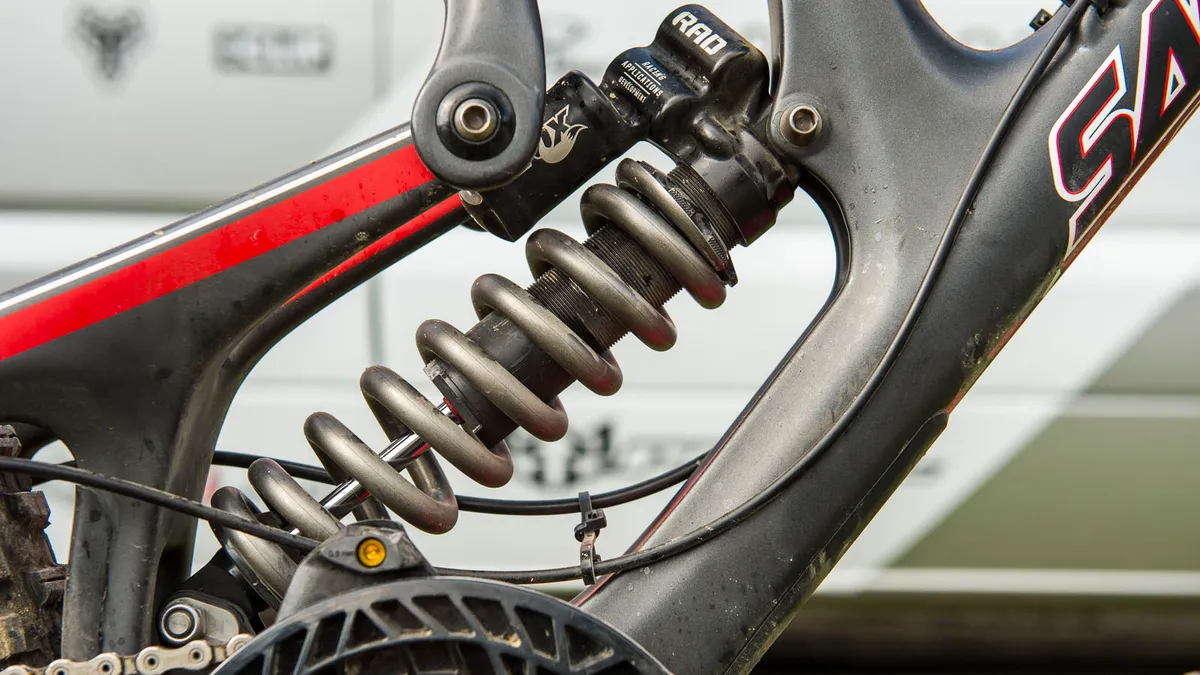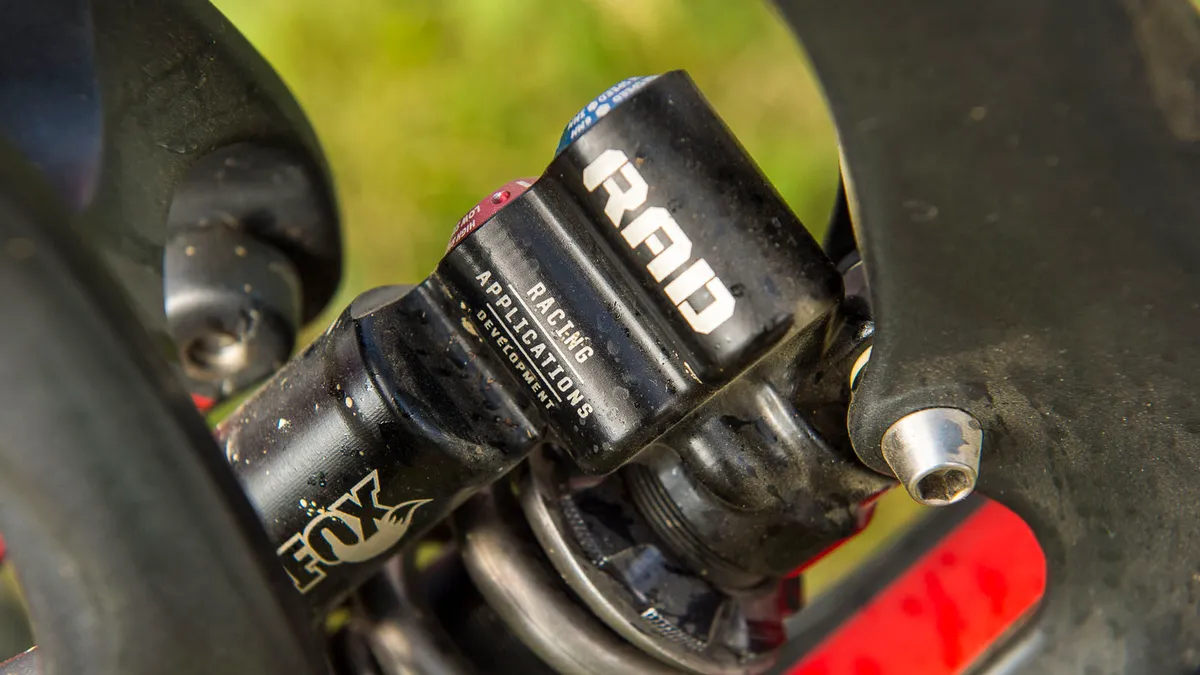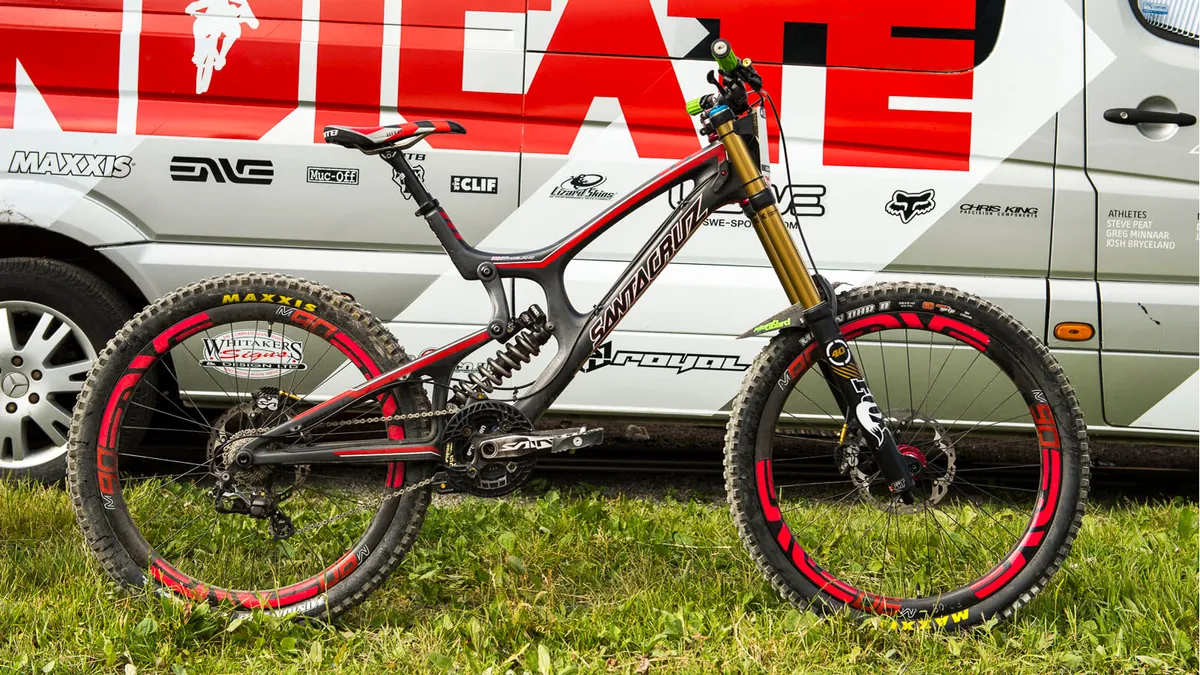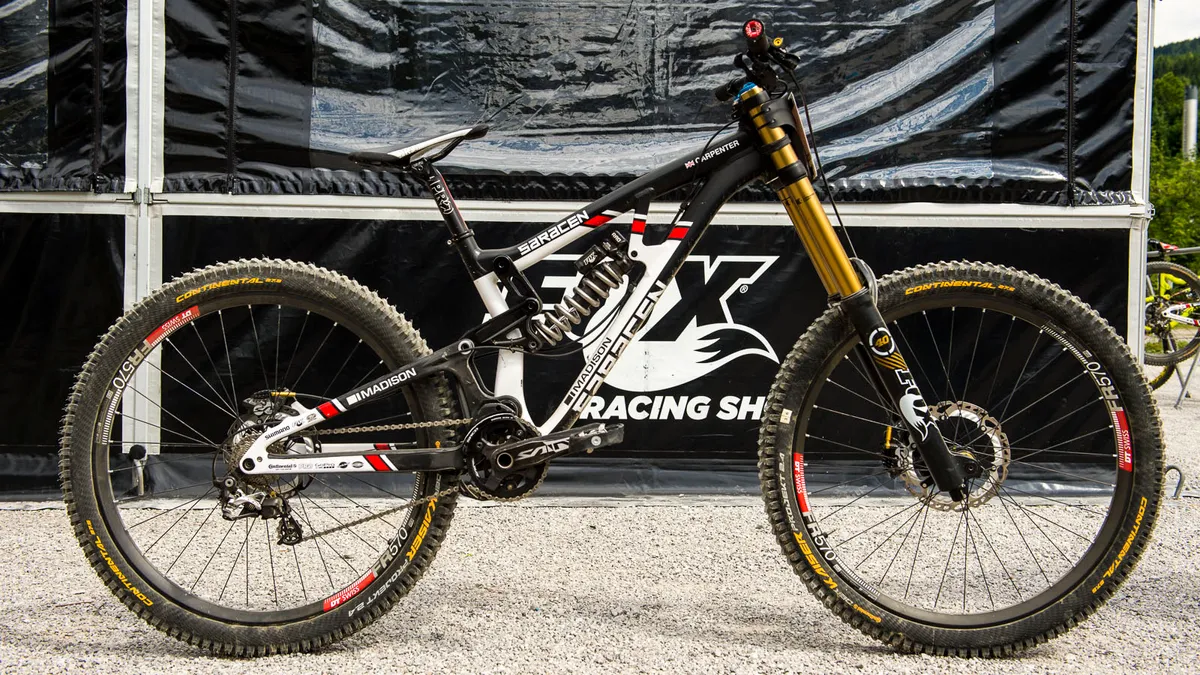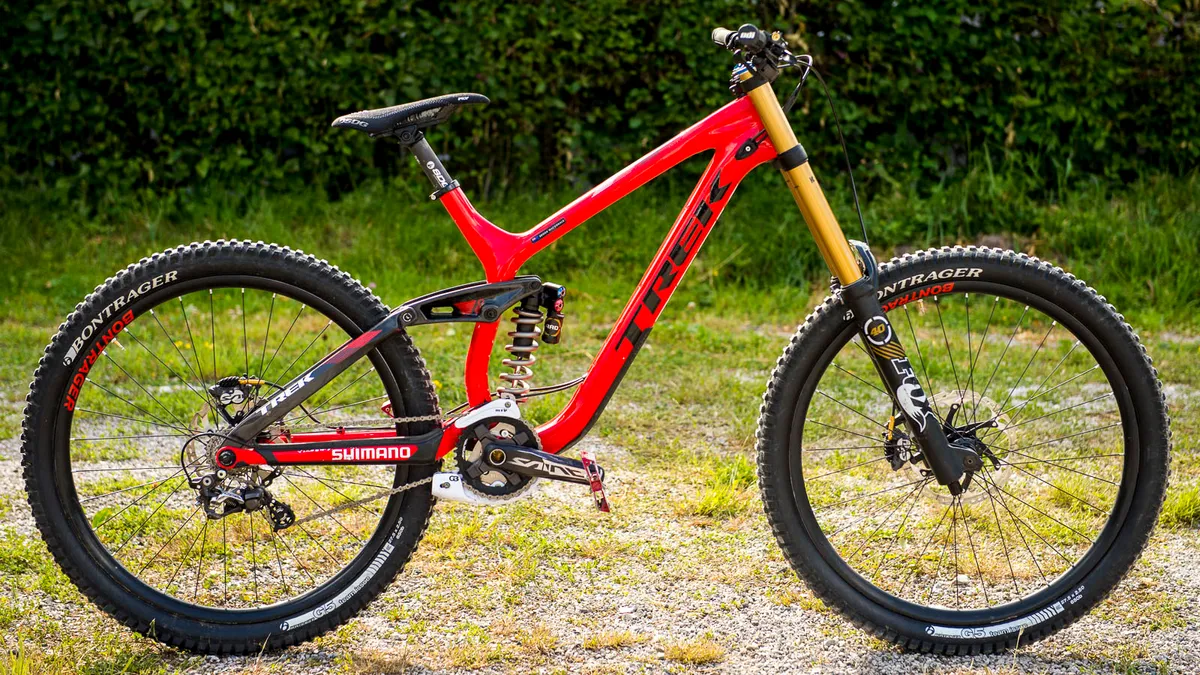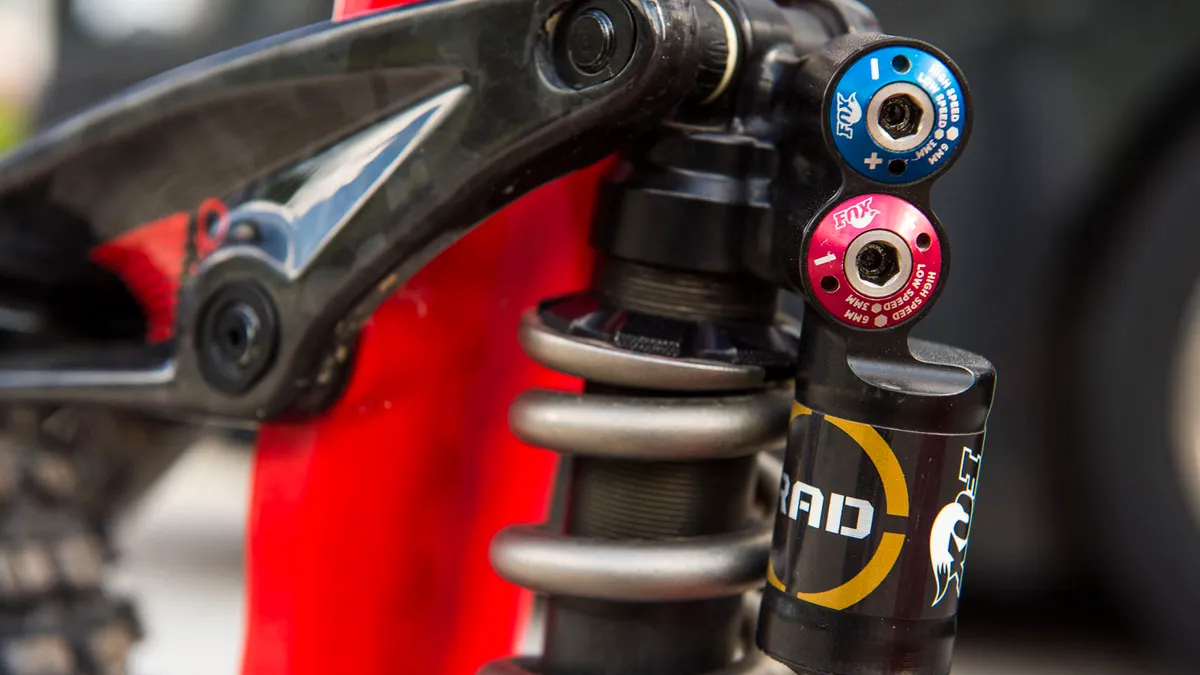The downhill mountain bike world cup stopped in Leogang, Austria, in mid-June and saw British riders Manon Carpenter and Josh Bryceland take the win. Shortly after the race, Fox invited BikeRadar to ride their bikes, complete with prototype RAD suspension, down the Leogang World Cup course itself.
In addition to Bryceland’s carbon Santa Cruz V10 and Carpenter’s Saracen Myst, we also got to ride Brook MacDonald's carbon Trek Session 650b.
RAD stands for Racing Applications Development and the prototype shock is a total departure from any existing offerings. Mark Fitzsimmons from Fox was quick to point out that the shocks and forks on all three bikes are prototypes. Although the fork runs the same chassis as the existing Fox 40, both the air spring and damper are different, making it almost 0.5lb lighter than the already-light production fork.
Fitzsimmons told BikeRadar that production models were unlikely to be available any time soon. The outer workings of the shock do look similar to the shock we caught glimpses of at last year’s world championships, but the internal workings have gone through many iterations to become the shock we rode down Leogang’s track after race day.

The RAD shock mounted in Brook MacDonald's new Trek Session 650b
All shocks need pressure behind the Internal Floating Piston (IFP) to stop air mixing with the oil (known as cavitation), which can cause the oil to foam and lead to inconsistencies in damping performance.
Most shocks use a pressure of between 150 and 300psi – a key difference with the RAD shock is that the pressure is very, very low — less than 50psi. The benefit of this is a big increase in small-bump sensitivity, and the ability to rely on the damper for mid-stroke support, rather than the pressure behind the IFP.
On both counts, the results are impressive. On all the bikes, with their varying setups, the standout feeling was that front-end grip was vastly improved, with adequate traction all the time.
The small-bump sensitivity while in mid-travel was sublime, and the support that the top racers demand from the damper was evident wherever we were sat in the travel.

The RAD offers more adjustment than any other Fox shock. It features both high- and low-speed compression and high- and low-speed rebound adjustment. All adjustments need either a 6mm or 3mm Allen key
The RAD shock’s low internal pressure translated to a supportive feeling out on the trail. That support is especially apparent through rough sections of trail where you need to drop your heels, push into the rear shock’s stroke, and rely on being able to load the rear end, without stopping the damper from dealing with the trail’s harsh features.
We came away from the session with a fresh 2015 40 Float fork for long-term test, and although the damper isn’t quite as impressive as the one the top racers are riding, our initial impressions are favorable. Check back soon for our long-term review.
